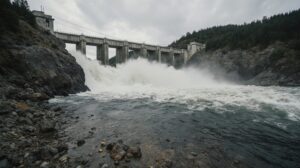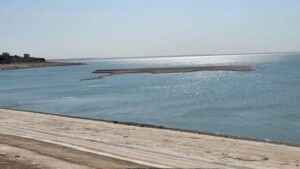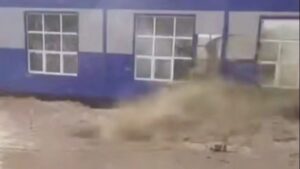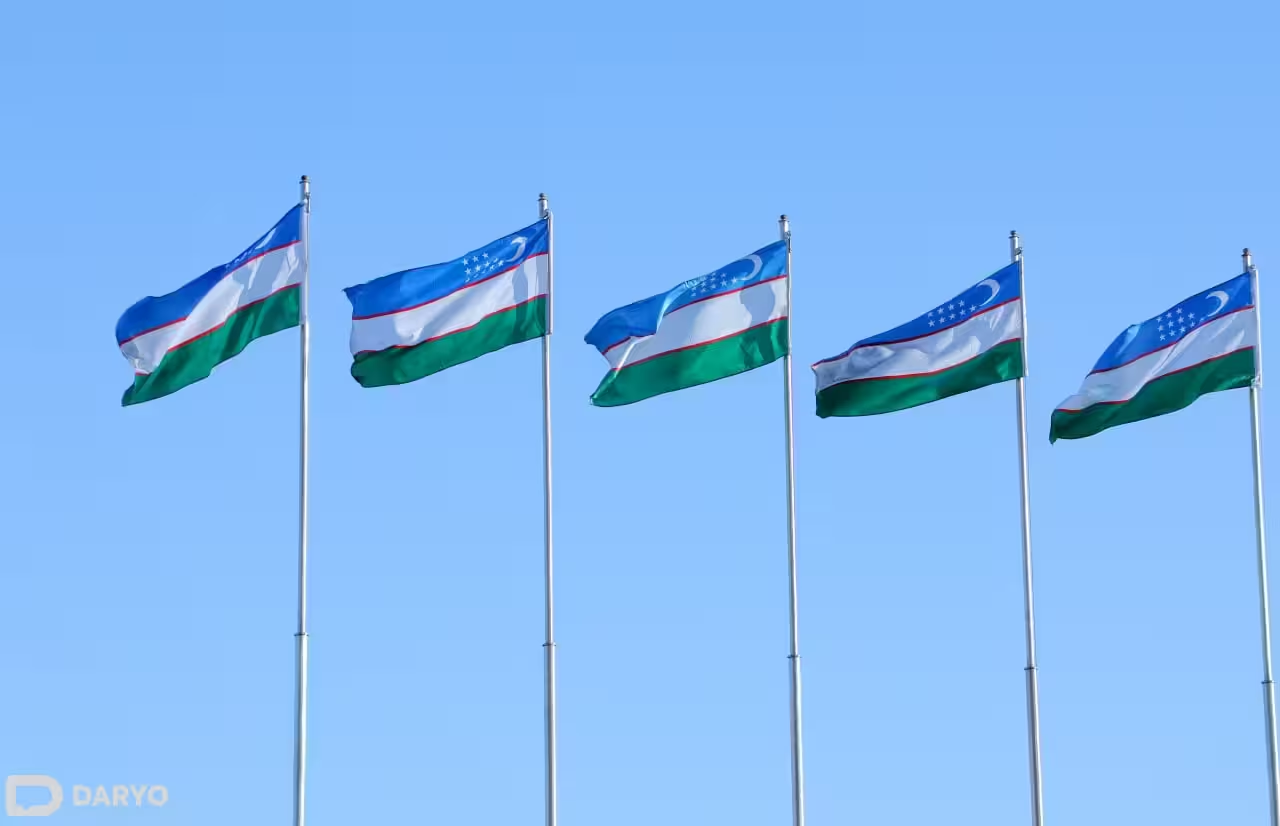The most spectacular panorama of a sturgeon farm – from above. In Ust-Kamenogorsk, when a plane lands, a river ribbon appears in the window and bright blue modules appear nearby. The very color of the complex seems to indicate its ecological nature. I remember that in 2017, when OstFish LLP was just starting to operate, its owners promised the East Kazakhstanis expensive and prestigious delicacies – black caviar, white fish. True, they urged you to be patient – sturgeon grow slowly. What for today? I decide to see the unusual farm with my own eyes.

…From the regional center to the farm is approximately 20 km. There is a sign on the side of the road – you won’t get lost. The passage to the LLP site is paved, and there is a power line nearby. OstFish CEO Erlan Sagidoldin immediately explains: the road and power lines were built by the local executive branch within the framework of the «Business Road Map». A large loan was also issued with the support of the state – in «KazAgroFinance» on preferential terms. And in general, state support accompanies the project literally from the first steps: scientists, water workers, and the executive branch help.
–At first they planned to place the fishery within the city, but the local water did not meet the quality, – says the manager. – Then they chose a site in the Ulansky district, 20 kilometers from Ust-Kamenogorsk.
Erlan shows the production site: the liquid oxygen supply unit is located separately, the modular buildings are connected to each other, there is a recreational area and… employees are practically nowhere to be seen.
– Everything is automated, – confirms the director. – No more than five employees are directly involved in the process, this is enough.
The monotonous sound of water can be heard inside the workshop, and swimming pools are installed in rows in the rooms. In some, large fish, at least a meter long, walk in circles, in others, juveniles flicker.
Basic equipment – from Latvia. Eight years ago, the entire technology was «tailored» for the production of edible black caviar, mainly for export.
Meanwhile, raising sturgeon, as mentioned above, is a leisurely business. In natural conditions, females, for example, begin to spawn when they reach the age of 10–11 years. And in aquaculture conditions – from about six years of age. In OstFish, 2022 was such a milestone when the first livestock produced caviar.
Erlan rubs his hands, remembering what plans the company was making at that moment. In Europe, sturgeon caviar as a delicacy is incredibly expensive; a similar Eastern Kazakhstani product could, without a doubt, compete.
Several delegations from European countries have already visited the sturgeon farm, and contracts have been concluded with the company. But as soon as it came to processing the first export batch, it turned out that a so-called Euro number – registration account number was needed. It also turned out that for a number of reasons its registration was suspended. And that’s not all. When the Kazakh side seemed to have settled all the formalities, a new barrier immediately arose – the absence of a memorandum between Kazakhstan and the EU on aquaculture…
– The memorandum will probably be signed in the fall, – says the head of the LLP. – But, to be honest, there is no point in counting on the European Union opening its doors to us. They know how to protect their domestic market. They understand: the cost of Kazakh caviar will be significantly lower.
Erlan shows a module completely occupied by pools with fry. Cute, big-nosed babies either rise to the surface or go to the depths. A little more, and in a special car with the inscription on the tank «Live fish» they will be delivered to the Kurchum region to be released into the Black Irtysh.
The fact is that the Ob-Irtysh basin is the native element of the Siberian sturgeon. For centuries in spring, fish rose from the Ob to the Black Irtysh to spawn. There were such powerful specimens that a blow from the tail could capsize a fishing boat with people…
According to the recollections of old people, back in the 1950s one could see a picture when a GAZ-53 truck was loaded with one fish, and the tail hung from the body almost to the ground…
The natural cycle on the river was interrupted by the construction of a cascade of hydroelectric power plants. The sturgeon population, which had remained in the upper reaches of the reservoir for some time, was quickly caught. The species was included in the Red Book of Kazakhstan, but in fact there was nothing left to save – The Irtysh lost its sturgeon.
–When we hear «sturgeon», «black caviar», we immediately see the west of Kazakhstan – Caspian Sea, Atyrau, Aktau, – says the leader. – Here, in the east, we became the first to learn on an industrial scale to produce sturgeon caviar, fertilize it and hatch fry. This is how the goal appeared: to revive the population in the Zaysan-Irtysh basin.
The pilot project received support from science. In 2023, the company carried out its first serious stocking campaign in the Abay region in the Zhanaseysky district. At that time, 3 thousand 100-gram yearlings were released into the Irtysh. Environmentalists, regional leaders, and journalists were behind the good deed. As a result, the Abay residents ordered another large batch of fish seeding material from the LLP. And then, according to Erlan, «the ice broke». Natural resource companies, which are required by law to restore fish stocks, began to contact them. Last year, for example, the farm collaborated with the Bukhtarma hydroelectric power station and entered into an agreement with a large gold mining company.
The initiative was also supported by the republican enterprise «Kazakhstan su Zholdary». In the fall of 2024, OstFish released thousands of youngsters into the Black Irtysh twice, to the delight of eco-activists and the Ministry of Ecology and Natural Resources.
In other words, the sturgeon farm has diversified the business: the conservation area has taken a leading role and, importantly, a long-term one. In order for broodstock to reappear in the Irtysh areas and natural spawning to begin, stocking work must be carried out for at least ten years.
–This year we have the largest volume in Eastern Kazakhstan, – the director provides details of work plans. – We must raise approximately 100 thousand youngsters and 20 thousand yearlings. In the Abay region, 13 thousand yearlings and two thousand yearlings have already been released into the Irtysh. In the Pavlodar region, the planned volume is approximately 100 thousand years and more than 10 thousand yearlings.
From eggs to fry
You can watch the inhabitants of the pools for hours. When they see a person, the fish rush upstairs, beg for food, and place their sides for stroking. According to Erlan, sturgeon sense the biofield of personnel and know «their» fish farmers.
Large individuals, which are seven to eight years old, are kept as a «milking herd» – for the production of caviar. Fry are raised for fish seeding material up to 12–20 grams, when they can adapt to the conditions of the river and not every predator can handle it. According to scientific data, the survival rate of sturgeon is higher than, for example, that of whitefish or cyprinids.
–This species is more than 60 million years old, – explains the head of a sturgeon farm. – He survived dinosaurs. I am sure – sturgeon will take root, our children and grandchildren will see the king fish in the Irtysh.
Why do white fish and black caviar have a cosmic price? The general director gives a layout: commercial cutting starts from three kilos, fish reaches this weight in 2.5 years. Feed – imported, in swimming pools – closed water circulation, that is, there are high costs for the operation of powerful electric pumps. A lot of equipment has been installed – it is necessary to control temperature, acidity, hydrochemical composition of water, oxygen level… Fish are provided with conditions close to natural, only without sudden seasonal changes. It is ideal if the pools have a flat temperature all year round –approximately 18–20 degrees. In short, getting sturgeon – is an expensive pleasure.
The load on three modules with an annual capacity of 15 tons is based on the season. From spring until cold weather, fish seeding material is grown in the pools, while in winter the emphasis is on obtaining food caviar.
–Today, using the income provided by the production of edible caviar, the farm covers all operating expenses, – says the businessman. – Using earnings from raising fry, the loan is also repaid. The company will have to pay for it for another two years, then the fish farming partnership will be able to turn a profit.
…I look into a separate room intended for processing caviar. Tiles, technological tables, workwear sets, cleanliness. Now boxing is empty, the season will begin later – along with the pre-New Year rush for delicacies.
According to the general director, specialists from Astrakhan helped out with the development of the technology. The company uses the «humane caviar» method developed by the famous sturgeon breeder Sergei Podushka. The point is as follows. The breeding stock with a certain stage of caviar maturity is sent for «wintering» – to a separate pool. The water temperature is lowered daily by one degree, and the fish is prescribed a starvation diet. The layer of fat surrounding the caviar is gradually broken down. After a couple of months, the water is made warmer, and the spring reflex is triggered in females: they are ready to spawn. At this point, they are milked through a small incision. Then the fish are simply returned to the water.
–With this method, the mortality rate of sturgeon is three times lower compared to the old method, when their bellies were simply ripped open, – Erlan gives details. – Part of the caviar is used for fertilization, we put it in special Weiss and «Sturgeon» devices. Part – for food. We make a small amount of it by order using the slaughter method, because among gourmets this kind of caviar is considered premium. It is slightly different in fat content and texture.
Wholesale without retail
The company has made a lot of mistakes when searching for marketing solutions. Erlan recalls how much effort and time it took to try to supply meat and caviar to the markets of Almaty and Astana. Almost immediately it became clear: this is troublesome, unprofitable, unproductive. Today, the LLP works exclusively through distributors and only with wholesale quantities.
–We are not currently producing commercial sturgeon, that is, for sale,” says the manager. – Exception – cases when orders for slaughter caviar come. We raise males not for meat, but for reproduction.
For black caviar, the company has become one of the largest domestic producers, the annual volume is one and a half tons.
According to the CEO, this is an excellent result given the high cost of the product. The interest of Kazakhstanis in the delicacy is pronounced seasonal – it is bought in December for the holidays, as a gift, for the New Year. Orders from cafes and restaurants are more regular, but they are also unattractive in volume.
–The domestic market of our republic is very limited, – concludes Erlan Sagidoldin. – If the opportunity for export opens up, the sturgeon farm will be able to increase production. There is potential.
I look around the LLP site again. Here, swimming pools are gradually being modernized – they are switching from polyvinyl chloride to a stronger and more environmentally friendly material, installing new pumps, and developing the recreational area as a side income. Aquaculture, according to the head of the LLP, has great prospects and, unfortunately, still has numerous problems. In particular, the industry is experiencing a shortage of specialists, there is no competition among feed suppliers, and the old-fashioned accounting system is maintained…
– Not only Russia, but also Kyrgyzstan is ahead of us in fish farming, – states the General Director of OstFish LLP«. » At the same time, the industry is developing rapidly. I know that there are European investors planning to build an entire sturgeon factory in our republic.
Galina Vologodskaya («Kazakhstanskaya Pravda»)




